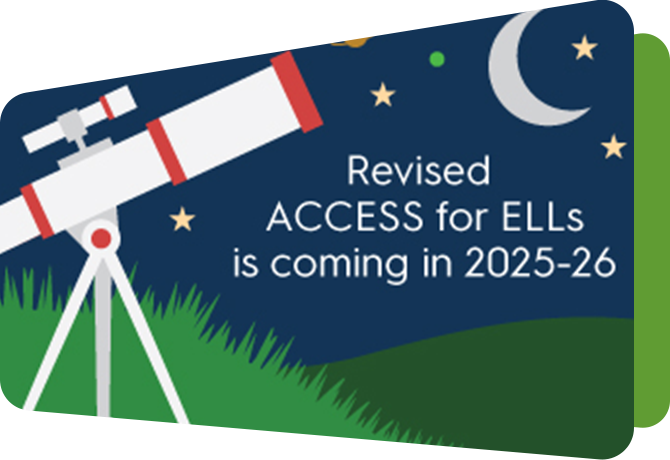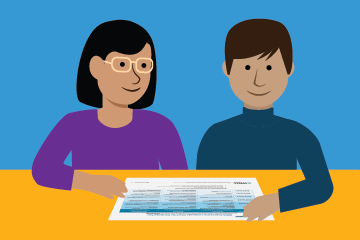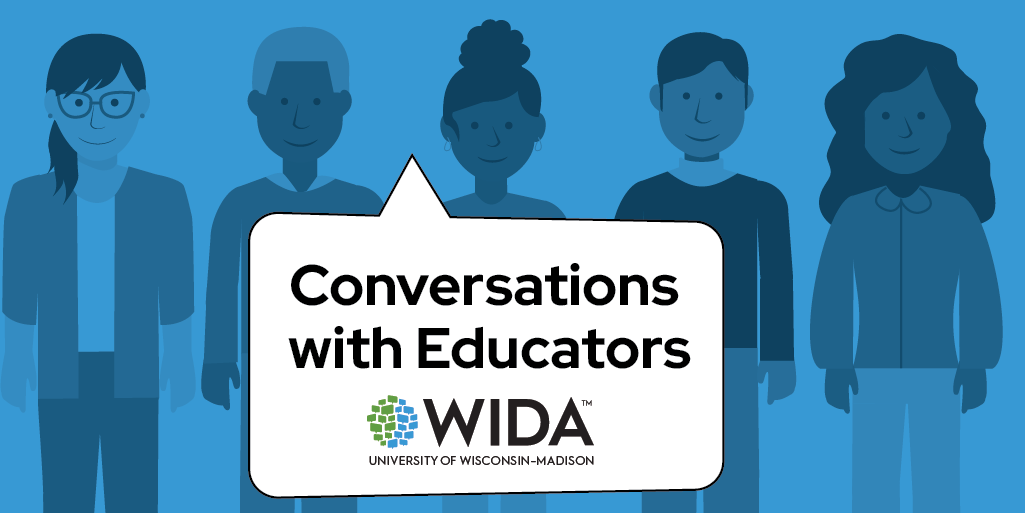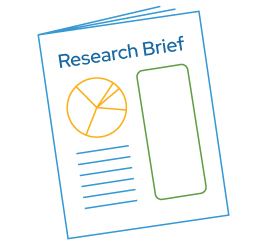Vitaliy V. Shyyan and Laurene L. Christensen
September 2018
English learners who have disabilities are a small but important subgroup of students in U.S. schools. Despite this subgroup’s small size, these students have diverse needs related to language and disability. This brief focuses on considerations of students’ language- and disability-related needs and their implications for instruction and assessment.
Double Work, Triple Work, and More
Short and Fitzsimmons (2007) ascertain that English learners must perform double the work of their native English speaking peers—learning English while studying core content areas in English. With this burden in mind, we suggest that English learners who have disabilities often perform triple the work, since their disability-related needs must be met as well. Moreover, English learners who have significant cognitive disabilities experience triple the work and beyond as they encounter even more labor-intensive challenges in the classroom associated with their language and disability needs. For example, English learners with significant cognitive disabilities may face challenges related to learning the content, developing proficiency in English, possibly using American Sign Language or another signing system, or using an augmentative/ alternative communication system, among other learning opportunities and challenges.
Language and Disability Needs Framework
To ensure that all students are meaningfully included in instruction and assessment and are advancing to college, career, and community readiness, educators need to consider their individual needs, characteristics, and preferences. For English learners with disabilities, including students with significant cognitive disabilities, educators should make sure that students’ language- and disability-related needs are met. Instructional and assessment decisions should be individualized in response to language- and disability-related challenges English learners with disabilities face in the classroom.
One approach to considering language- and disability-related needs of English learners with disabilities is to think about where each student falls within the Language and Disability Needs Framework (Shyyan et al. 2016). In this framework (Figure 1), language-related needs are represented on one continuum and disability-related needs fall along the other continuum. Students can be located anywhere in the four quadrants, representing variations of intensity of these needs.
Refer to Figure 1: Language and Disability Needs Framework
In general, students with high English language needs and low disability-related needs will require more language-based instructional and assessment supports while their counterparts with high disability-related needs and low English language needs will require more supports that remove disability-related barriers. At the same time, students with high English language needs and high disability-related needs will benefit from more intensive language- and disability-related supports to alleviate linguistic and disability-related challenges. Students with low English language needs and low disability-related needs will require fewer supports. However, even within one quadrant, students vary depending on the intensity of their needs.
Although the vast majority of English learners with significant cognitive disabilities might be in the quadrant of high language-related and high disability-related needs, educators should be cognizant of high levels of diversity within this population of students (Christensen, Mitchell, Shyyan, & Ryan, 2018; Christensen & Mitchell, 2018) with some students having needs associated with the other three quadrants. Moreover, even within the high language-related and high disability-related needs quadrant, students can be in different locations, and their individual needs will vary.
Furthermore, student needs may change over time. As students grow in their proficiency in English, educators expect their positions within the quadrants to change. Although many disability-related needs may be consistent, other needs, such as for help with speech language, may shift. Educators must regularly reevaluate students’ changing language- and disability-related needs.
How to Use the Framework
This framework of accounting for varying language and disability-related needs for English earners with disabilities was developed to empower educators with a better understanding of two major aspects of their students’ needs. The framework facilitates instructional and assessment decision making and helps educators consider combinations of student needs. Educators should take variability within each quadrant into account, and students’ individualized needs should be addressed on an individual basis. Also, when talking about language, educators should keep in mind the complexity of this phenomenon and consider related factors such as communication and culture, for example (Christensen & Shyyan, 2018; Huff & Christensen, 2018). Similarly, disability complexity should be factored in, with the considerations of the disability type, intensity, number (in case of multiple disabilities), etc.
The framework’s second aspect helps educators plan and stratify instructional and assessment resources and approaches in accordance with student needs. Developing a classroom chart of students with this framework in mind might help educators think about students’ individual needs and better understand how students compare to each other and shift from one quadrant to another depending on their growth. Figure 2 provides a copy of the framework that can be used for this purpose.
Questions to Consider for Individual Students
Consider the following questions when using the framework with individual students:
- Where can the student be placed on the language and disability grid?
- What disability-related challenges are apparent for this student?
- What instructional and assessment supports would meet the student’s disability-related needs?
- What language- and culture-related challenges is this student facing?
- What linguocultural supports would be beneficial for the student in instruction? Is the student able to receive these supports during assessments?
- What instruction and assessment accommodations would benefit this student?
- Are special education teachers and language acquisition professionals involved in making instructional and assessment decisions for the student?
- Has the student’s placement changed since the previous evaluation period? If the student shifted from higher-needs to lower-needs quadrants, what strategies worked well to assist this student in the classroom? If the student shifted from lower-needs to higher-needs quadrants, what additional instructional and assessment supports are required?
References
Christensen, L. L., & Mitchell, J. D., (2018, September). Classroom perspectives on English learners with significant cognitive disabilities. Madison, WI: University of Wisconsin–Madison, Alternate English Language Learning Assessment (ALTELLA) project.
Christensen, L. L., Mitchell, J. D., Shyyan, V. V., & Ryan, S. (2018, September). Characteristics of English learners with significant cognitive disabilities: Findings from the Individual Characteristics Questionnaire. Madison, WI: University of Wisconsin– Madison, Alternate English Language Learning Assessment (ALTELLA) project.
Christensen, L. L., & Shyyan, V. V. (2018, August). Nonverbal communication in diverse classrooms: Intercultural competence considerations for supporting English learners with significant cognitive disabilities.
Huff, L., & Christensen, L. L. (2018, September). The role of language and communication in the education of English learners with significant cognitive disabilities.
Short, D., & Fitzsimmons, S. (2007). Double the work: Challenges and solutions to acquiring language and academic literacy for adolescent English language learners— A report to Carnegie Corporation of New York. Washington, DC: Alliance for Excellent Education.
Shyyan, V., Thurlow, M., Christensen, L., Lazarus, S., Paul, J., & Touchette, B. (2016). CCSSO accessibility manual: How to select, administer, and evaluate use of accessibility supports for instruction and assessment of all students. Washington, DC: Council of Chief State School Officers.
Figure 1: Language and Disability Needs Framework
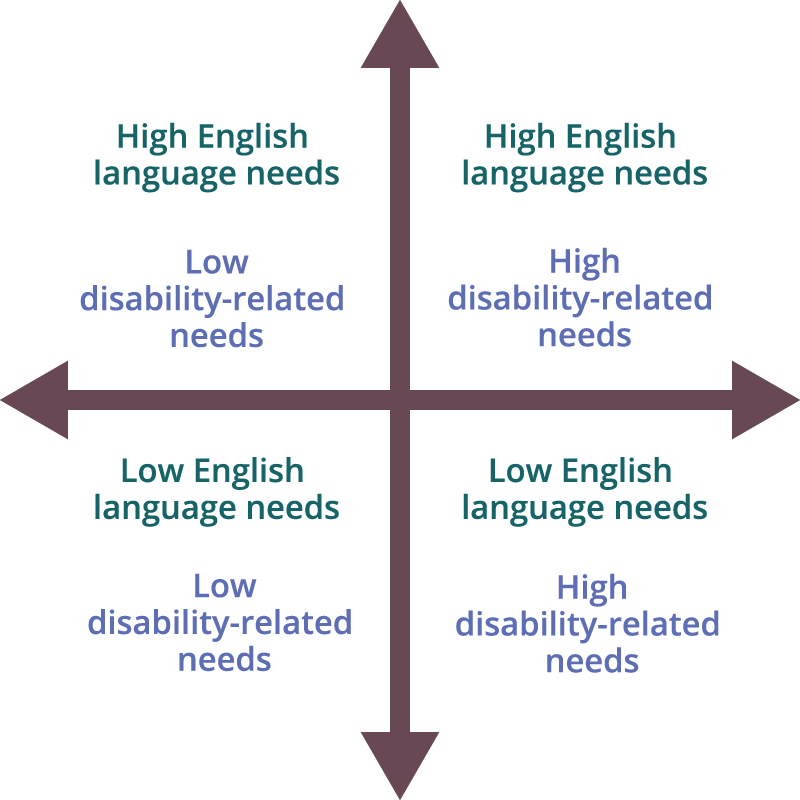
This figure shows the Language and Disabilities Needs Framework as quadrants with double-sided arrows as dividers:
- The top left quadrant includes "High English language needs" and "Low disability-related needs."
- The top right quadrant includes "High English language needs” and "High disability-related needs."
- The lower left quadrant includes "Low English language needs" and "Low-disability related needs."
- The lower right quadrant includes "Low English language needs" and "High disability-related needs."

